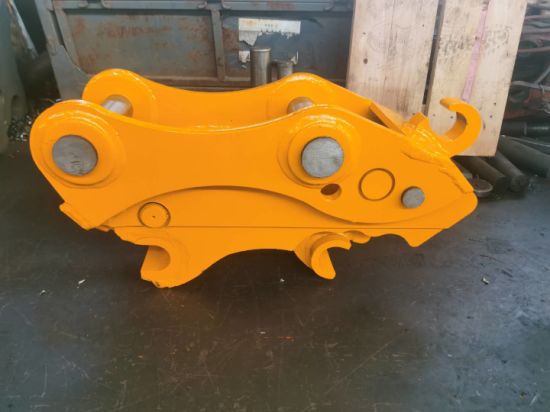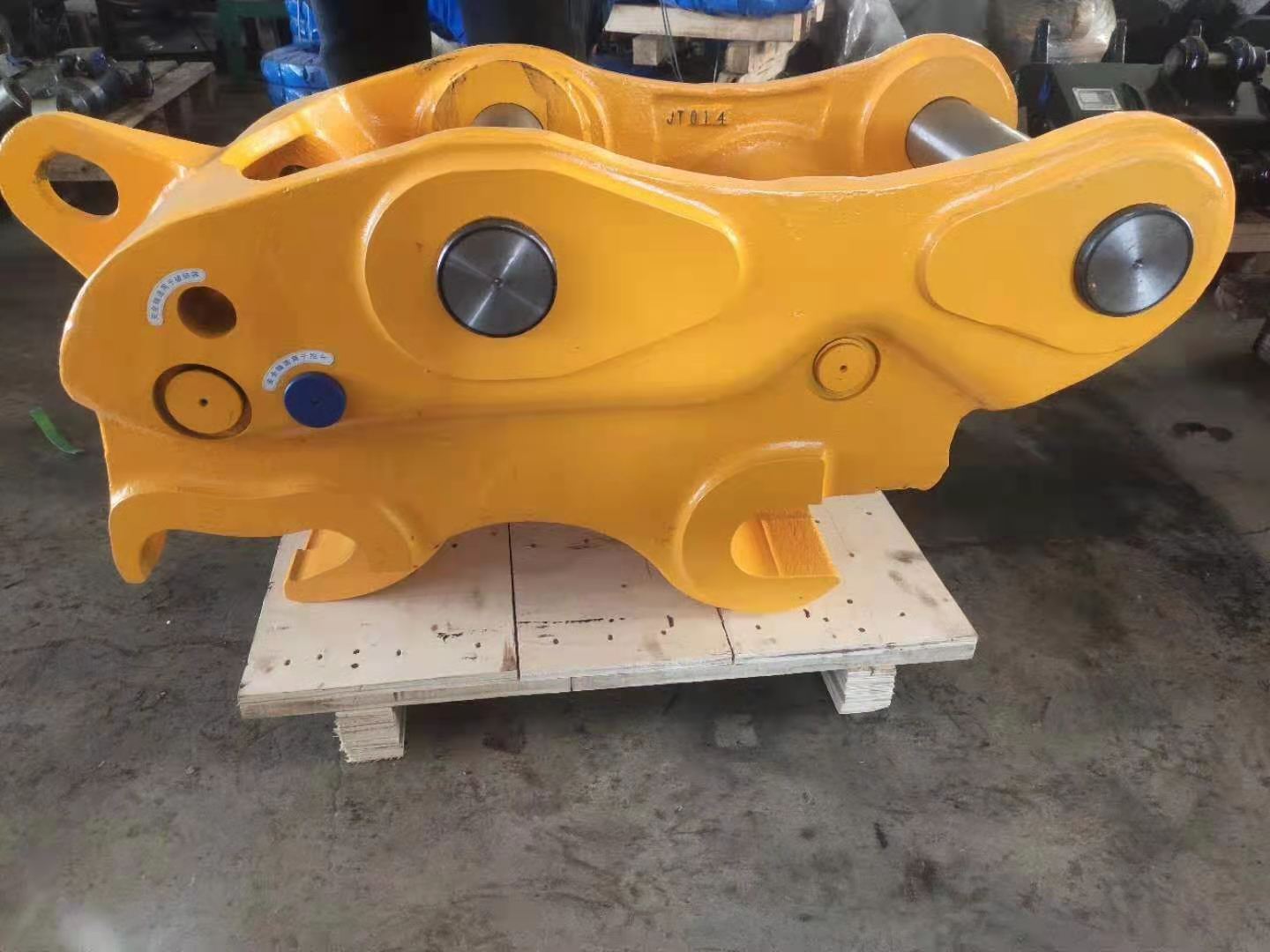 HuiTong
HuiTong  2025-06-13
2025-06-13
In the use of construction machinery products, especially tire-type excavators, crawler-type excavators, grabbing (steel) machines and rescue machines, it is often necessary to quickly replace different supporting accessories according to different operating conditions to make the machine fully perform Effectiveness, complete a variety of tasks, improve the cost of the machine. The replacement method of traditional work attachments must be replaced by manual disassembly and assembly of the connecting shaft pin, which requires special disassembly and installation tools. It takes more than 1 h for skilled workers to replace the work device. This replacement method is time-consuming and laborious. If the quick-coupler for digger and its quick-change control hydraulic system are installed, the driver can easily complete the quick disassembly and assembly of various operating devices on the job site through the joystick and button control in the cab, which not only ensures construction safety, but also reduces It saves time for disassembly and installation, and can also avoid damage to the pin shaft during disassembly and assembly.

1 Structure and working principle of quick-coupler for digger joint
Figure 1 is the outline drawing of the HKS TR-K180 quick-change structure. It consists of three parts: (1) The head connection mechanism with the main machine arm: through the four-bar linkage mechanism, it can be flexibly connected with various excavators, grabbers and The boom head on the rescue machine is mechanically connected; (2) Quick-change locking mechanism: the piston rods of the two single-rod piston hydraulic cylinders can be used as connecting shaft pins, respectively, through the full reciprocating movement of the two hydraulic cylinders. Realize the connection and disconnection with various attachments. When both the rodless chambers of the two hydraulic cylinders enter a certain value of pressure oil, the piston rods of the hydraulic cylinders will be pushed out. After the piston rods pass through the connecting holes on the attachments, the quick-change mechanism and the attachments are connected as a whole , Realizes the quick installation function with the attachment; on the contrary, when the rod chambers of the two hydraulic cylinders have entered a certain value of pressure oil, it will push the piston rod of the hydraulic cylinder to retract, and the piston rod will automatically disconnect from the attachment. Hole connection, which realizes the quick and automatic disconnection function of the quick-change mechanism and the attachment; (3) The connection mechanism with the attachment: by installing the matching male and female quick connector bodies on the quick-change mechanism and the attachment connection mechanism respectively, On the boom
The working oil circuit of the attachment can quickly and automatically connect and disconnect with the oil circuit of the lower attachment after passing through the quick change mechanism.

2 Technical requirements for hydraulic system control of quick-coupler for digger couplings
The research focus of this article is the analysis of the working control principle of the hydraulic system of the quick-change coupling. According to the instructions of the HKS TR-K180 quick-change coupling, when the rodless cavity of the two hydraulic cylinders of the quick-change locking mechanism is always stored at least more than 11MPa pressure oil , It will push the piston rod of the hydraulic cylinder to always be in a fully extended state, so that the piston rod will always pass through the connecting hole on the attachment, connect the quick change mechanism with the attachment as a whole, and the whole machine can use this attachment to perform Working under working conditions, when the attachments need to be replaced quickly after finishing the working under this working condition, the two hydraulic cylinder rod chambers are controlled by the driver to enter a certain value of pressure oil, which will push the piston rod of the hydraulic cylinder to retract. The piston rod will automatically disconnect from the hole on the attachment, so that the quick-change mechanism and the attachment can be quickly and automatically disconnected. According to the working conditions of the attachment and the connection and disconnection process of the attachment and the quick-change mechanism, the following technical requirements are put forward for the design and selection of the quick-change control hydraulic system of the attachment: Only the hydraulic cylinder without a rod cavity always exists at least greater than 11MPa The pressure oil can ensure that the piston rod always passes through the connecting hole on the attachment in a fully extended state, and is firmly connected to the attachment. After the attachment is connected with the quick-change mechanism, it is considered that the attachment will perform various complicated tasks with the main engine for a long time. During this work, the hydraulic cylinder will have a great impact, and at the same time, consider that the hydraulic cylinder has a certain internal leakage Therefore, the hydraulic system control must consider adding the rodless cavity safety lock function control of the hydraulic cylinder, and always need to replenish the rodless cavity of the hydraulic cylinder, and the working pressure value can be detected from time to time, and the low pressure alarm function can be performed ; When the rod cavity of the hydraulic cylinder enters a certain value of pressure oil, the control piston rod is required to be quickly and smoothly retracted into the cylinder; the quick change control requires simple and reliable operation, and consider making full use of the main engine hydraulic system Existing hydraulic power source can be used to control, without additional hydraulic power source.